The Officers Report for the Cairngorms National Park Planning Authority meeting on Friday which will consider the hill track at Cairngorm is as interesting for what it leaves out as for what it includes. This is over and above the policy omissions and enforcement failures considered in yesterday’s post.
On the positive side, there appears to have been a lot of bargaining behind the scenes, which has resulted in plans to improve the whole area, beyond the current application.
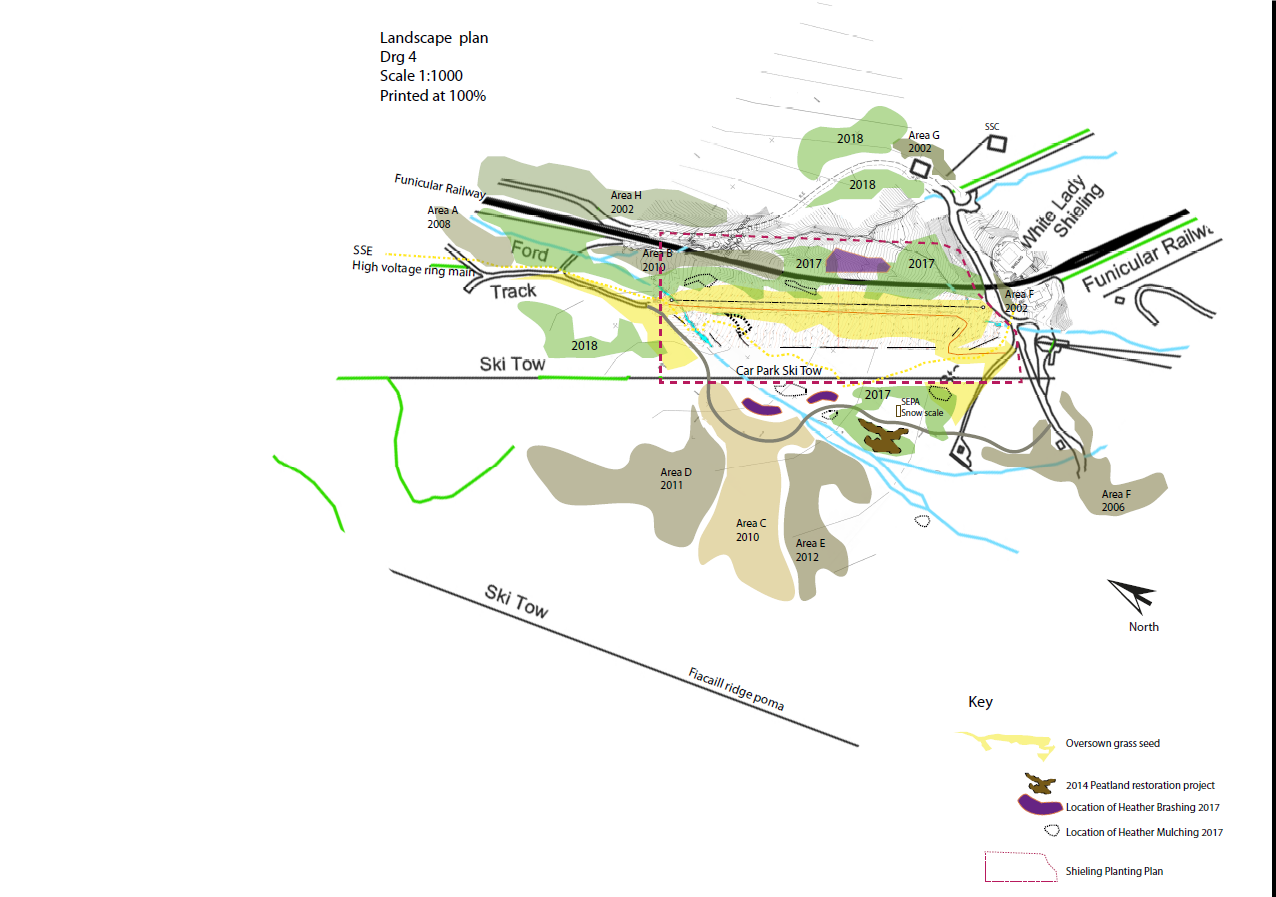
The planting will not just hide some of the infrastructure, it should also – though there is no mention of this in the Report – compensate for some of the increased water run-off that has been created by the development. There are some other positive things in the plan, including works around both ends of the ski tow to improve landscaping; the work at the bottom will be done by hand. All of this is good. It should however have all been included in the original planning application, which was sketchy at the very least. Its clear to me that the public pressure has helped (or is it pushed) CNPA staff to take more interest in the development. A lesson here for the CNPA. Well thought out plans properly enforced would avoid lots of problems and public criticism.
On the negative side though the Report, and accompanying documentation supplied by Natural Retreats, fails to explain a number of factors which are relevant to determining the application and indeed to the wider landscape improvement plan:
- The implications of the new track failing to meet the design standards set out in SNH’s Guidance on “Constructed Tracks in the Scottish Uplands” is not considered nor is there any consideration of alternatives
- There is no attempt to describe the extent of the area where works took place in breach of the planning permission (the application was for a strip of ground 30m broad). This is important because without a description of what has been done, the CNPA is not in a position to stipulate what remedial measures are required.
- Related to this, there is NO description of the impacts of the works on the hydrology of the area.
I will address each of these in turn based on the evidence I saw on my latest walk around on Saturday. While I am not a trained path worker, ecologist or hydrologist I believe there is more than enough evidence to show that these issues need to be considered by properly qualified and independent professionals.
Location and design of the hill track
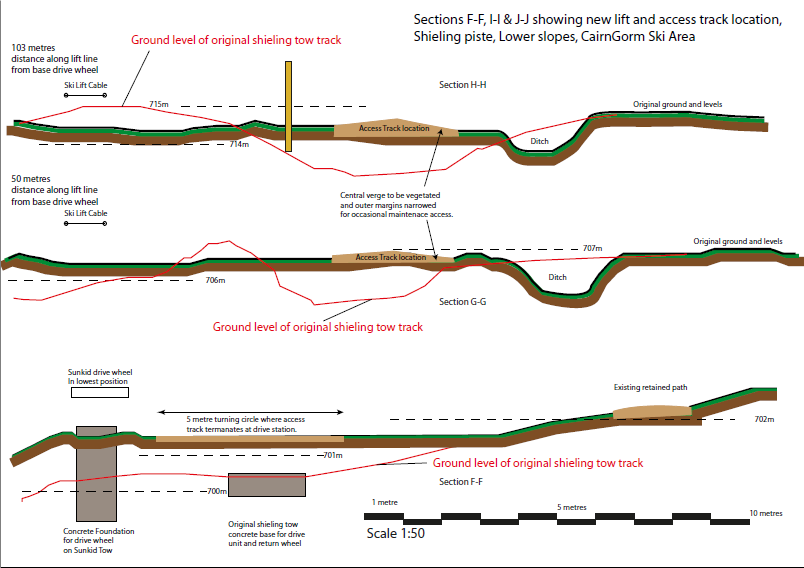 There has been a lot of nonsense talked about the hill track being needed for construction purposes. This diagram from Appendix A to the Committee Report shows that this couldn’t have been the case. The elevation of the new track is HIGHER than the previous sheiling tow uptrack which sat between two bulldozed banks (section GG). In other words the hill track could only have been created AFTER the slope had been smoothed out (which was agreed in the original planning application). This explains why there is NO evidence of any temporary construction track. There wasn’t any. Natural Retreats appears to have confused the original ski uptrack with the new hilltrack in order to make the latter appear more acceptable by implying this had already been agreed on a temporary basis.
There has been a lot of nonsense talked about the hill track being needed for construction purposes. This diagram from Appendix A to the Committee Report shows that this couldn’t have been the case. The elevation of the new track is HIGHER than the previous sheiling tow uptrack which sat between two bulldozed banks (section GG). In other words the hill track could only have been created AFTER the slope had been smoothed out (which was agreed in the original planning application). This explains why there is NO evidence of any temporary construction track. There wasn’t any. Natural Retreats appears to have confused the original ski uptrack with the new hilltrack in order to make the latter appear more acceptable by implying this had already been agreed on a temporary basis.
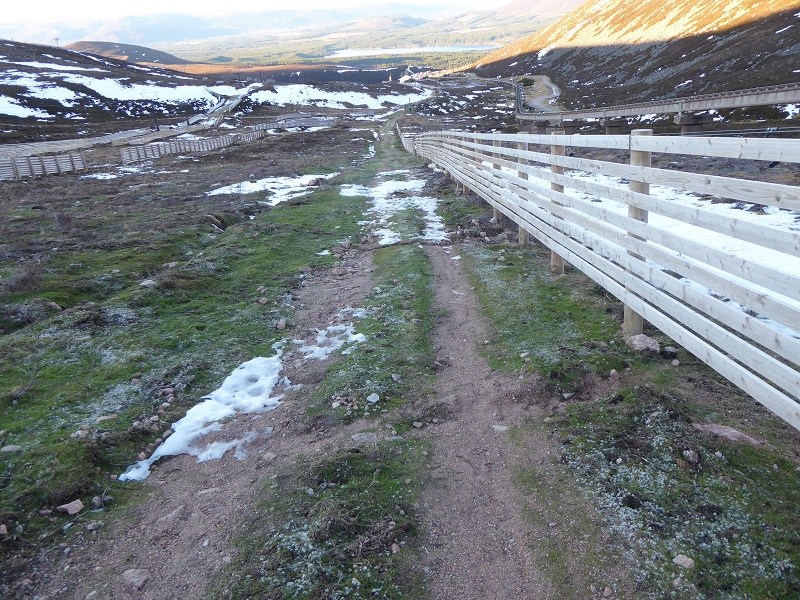
The most likely explanation for why Natural Retreats created the hill track is still that they did not have sufficient vegetation to replace that they had destroyed in the course of reprofiling the slope. The track filled the gap. The question that has still not been answered is where all the fine material that has been used to surface the new track has come from? While on Saturday, there was good evidence of how this material gets washed away (see photo above) it was not until I received the photo below taken by Alan Brattey on Monday that I fully appreciated how quickly this happens.
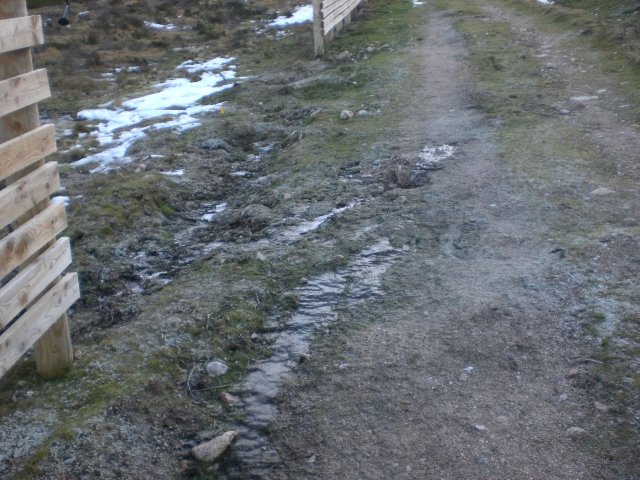
There was no sign of the hole, centre right, when I walked down the track two days before. Two days of freeze thaw and another section of track had been destroyed.
Part of the problem is that the track is too steep, contrary to SNH guidance. Natural Retreats has appears to accept this in its comment that the track “is constrained to existing ground levels” – in other words its fundamentally flawed!
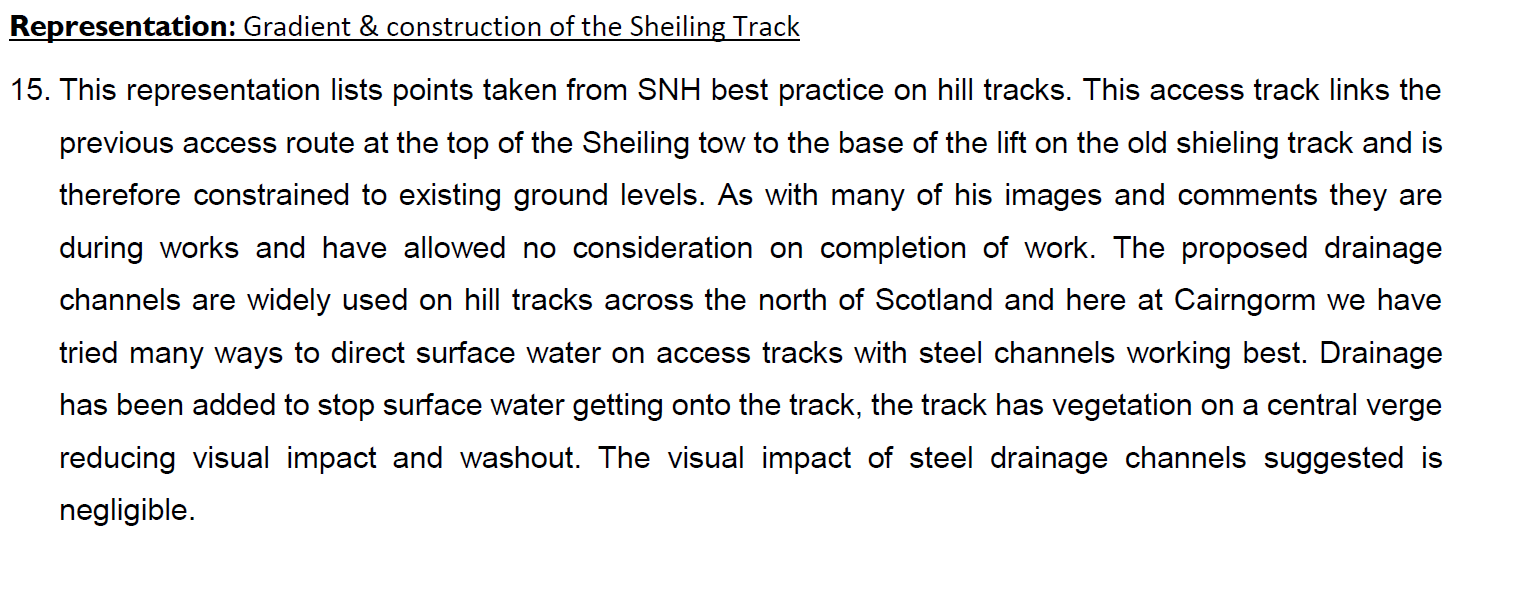 Natural Retreats has also accepted that the track washes away:
Natural Retreats has also accepted that the track washes away:

Natural Retreats solution is drainage bars which it says works well. If CNPA officers had walked around Cairngorm at the weekend they would have seen every single steel drainage channel choked with eroded material
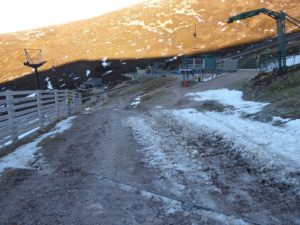
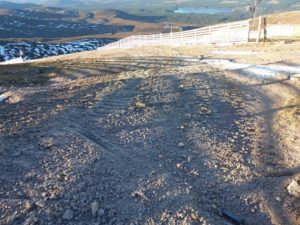
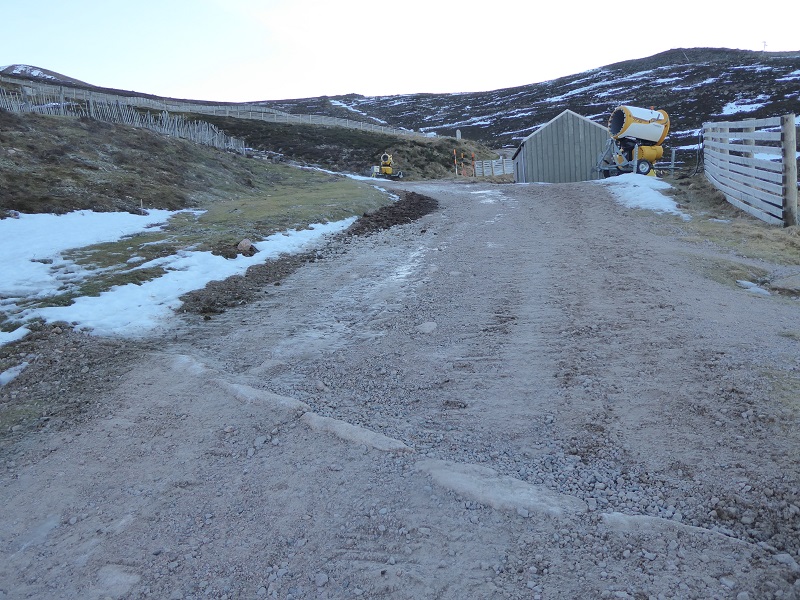
CNPA officers should have questioned the efficacy of steel drainage channels and its interesting why they have not advocated the use of natural materials, as in photo above. Are the granite blocks any less effective in terms of drainage? They are far more in keeping with the natural environment.
The problem which remains though is that the surface materials are too fine and will wash away whatever drainage is installed. The track, as oriented, is simply not sustainable and the Planning Committee needs to consider alternatives.
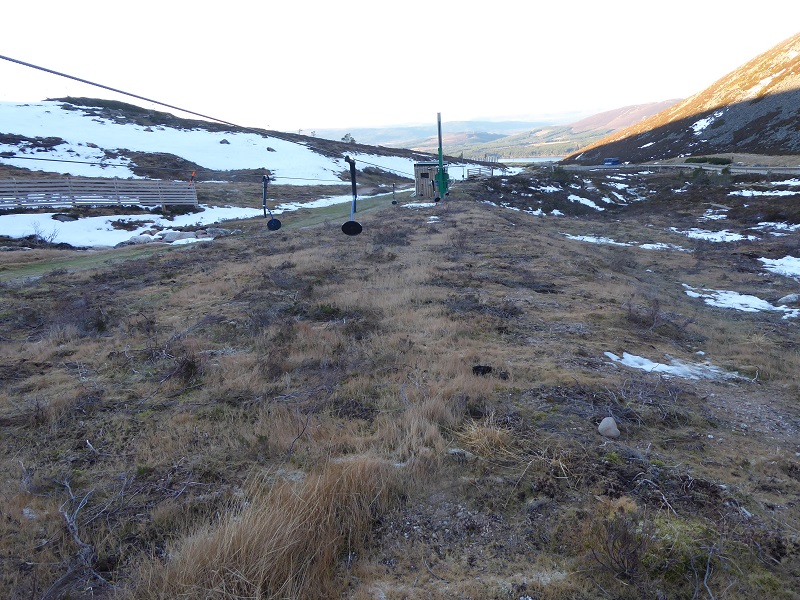 Any alternative should consider that there will now be a new uptrack created by the rope tow. Its hard to see the heather planted along the line of the rope tow surviving (all the other uptracks lose their heather, with the car park t-bar below the Shieling almost completely bare of heather). So, if planning permission is granted to the hill track there will be double the visual impact in the long-term, something the CNPA has apparently not considered. If vehicle access is really needed occasionally, its strange that the uptrack, which is now totally smooth apart from the top section, was not considered as the means to do this.
Any alternative should consider that there will now be a new uptrack created by the rope tow. Its hard to see the heather planted along the line of the rope tow surviving (all the other uptracks lose their heather, with the car park t-bar below the Shieling almost completely bare of heather). So, if planning permission is granted to the hill track there will be double the visual impact in the long-term, something the CNPA has apparently not considered. If vehicle access is really needed occasionally, its strange that the uptrack, which is now totally smooth apart from the top section, was not considered as the means to do this.
Damage to surrounding ground and vegetation
In order to “restore” the damage caused by the works on the Sheiling slope, Natural Retreats scooped up vegetation from outside the area granted planning permission.
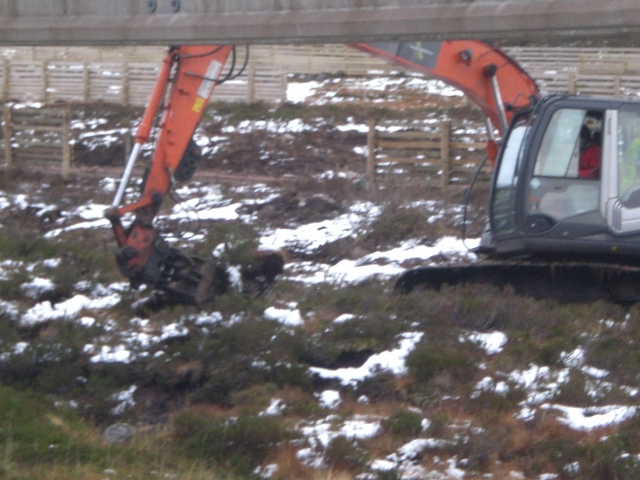
I had not realised till Saturday that this appears to have been from a far wider area than that immediately adjacent to the shieling slope.
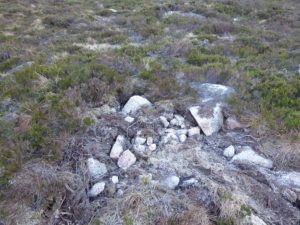
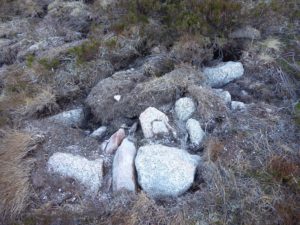
The whole of the bank above the track to the Fiacaill dump is full of holes where vegetation has been removed – the most likely explanation appears to be that this was used to replace the vegetation at the Shieling which had not been properly stored.
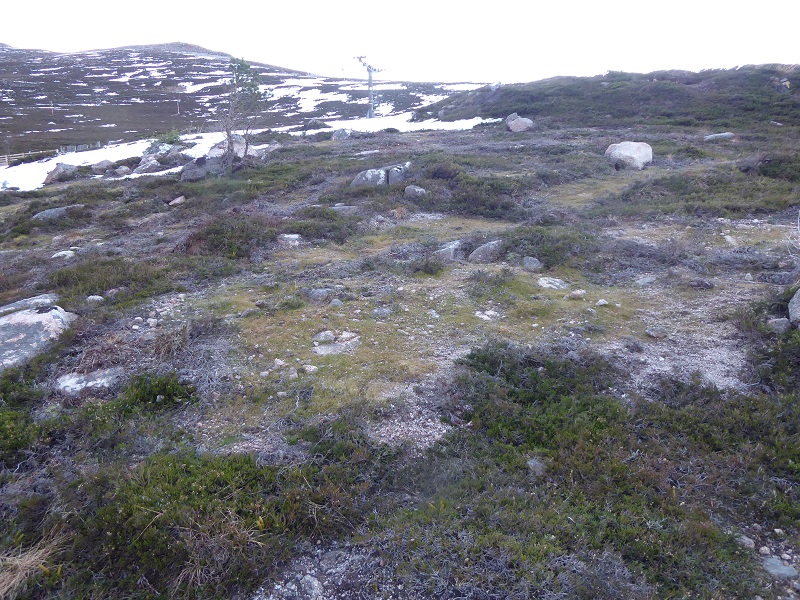
The CNPA Committee Report makes no attempt to other describe or assess the impact of this destruction. If it had done so, it would help put the remedial measures I described at the beginning of this post in context, as they do not address all of the damage that has been done or assess what impact this might have in the long-term. A proper vegetation assessment should have been undertaken before any decision is made.
Drainage
While the CNPA Committee Report includes comments from their ecologist, this says nothing about either the damage outside the area granted planning permission or strangely about hydrology. What is clear from my walk around is that there has been extensive work to alter the drainage of the shieling ski slopes and surrounding area. I am not necessarily against such works – I recognise that ski slopes and bogs are not really compatible – but the point is that there should have been a proper assessment of the impact of such works and any mitigation measures BEFORE any work was undertaken. This is because water run-off from drainage not only changes the local ecology, it increases the likelihood of flooding downstream – in this case of Aviemore – which is one of the Big 9 issues the CNPA is supposed to be trying to tackle.
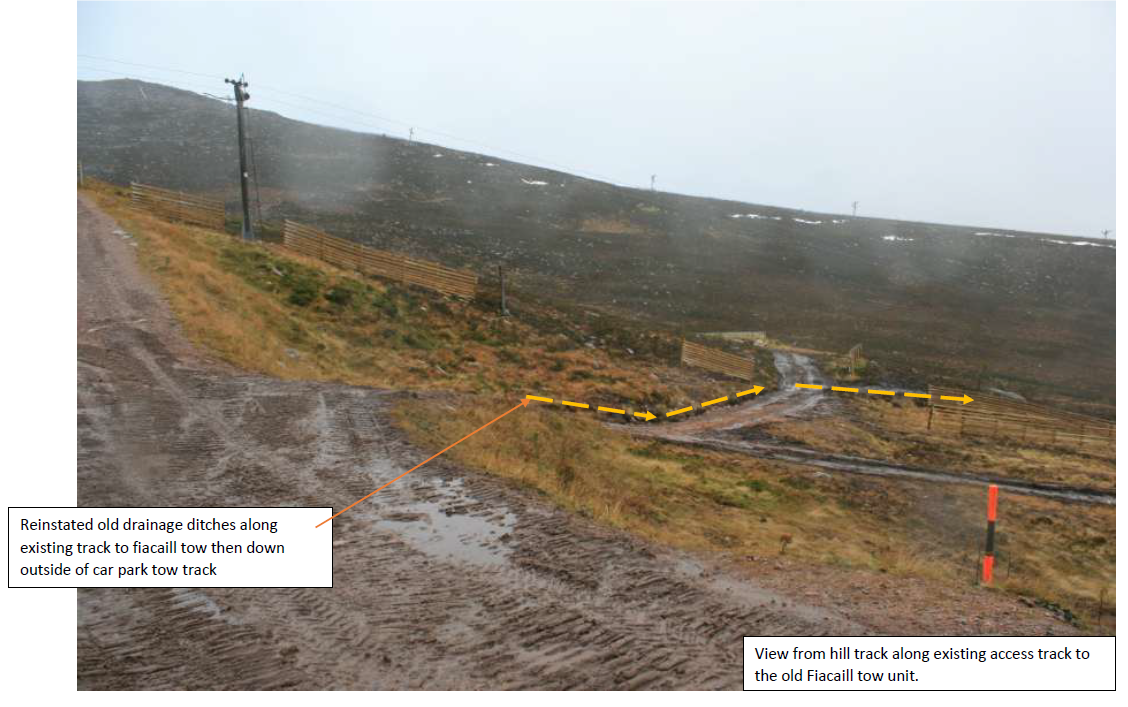
Why a proper assessment is needed is illustrated by these photos. Natural Retreats included the photo above in their plans showing what they had done. 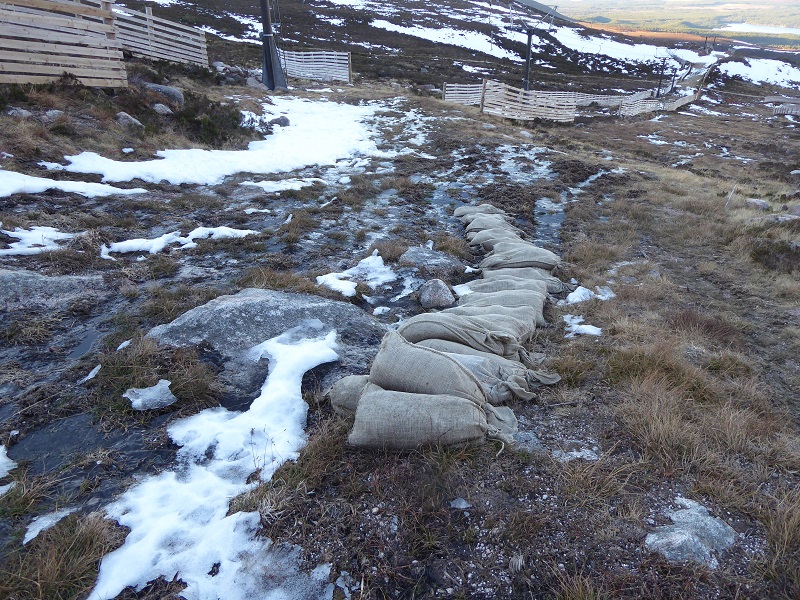 The photo below shows how the area in the distance looked on Saturday. The sandbags are proof that something is not working.
The photo below shows how the area in the distance looked on Saturday. The sandbags are proof that something is not working.
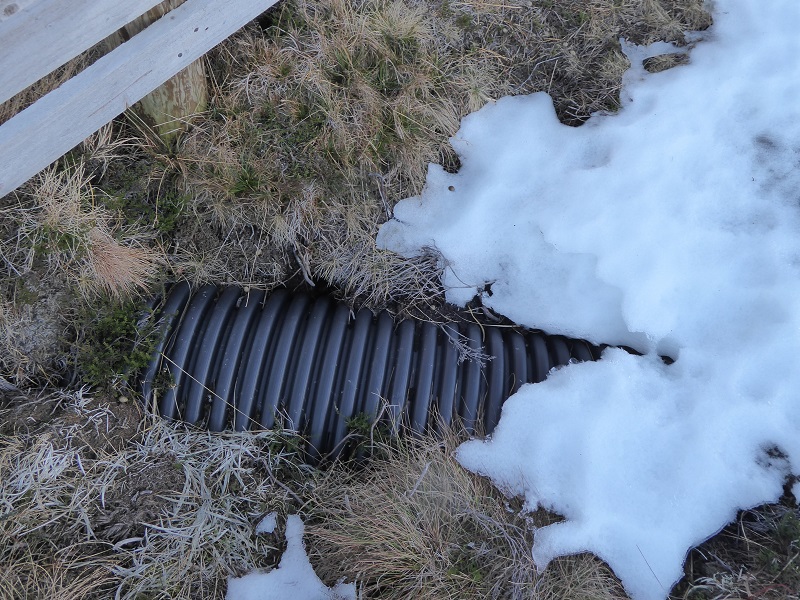
In fact there are sandbags in several places on the slope – an illustration of problems that the CNPA has simply not considered – and also a significant number of culverts across and along the edge of the ski slopes.
Now, I am not sure when these were created but the only culverts referred to in the planning application were to channel the Allt Choire Cas, which runs across the bottom of the Sheiling Ski slopes, underground instead of the old wooden bridges.

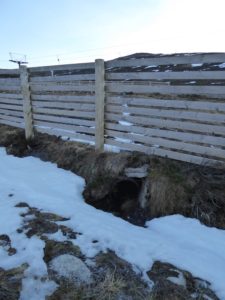 New? and poorly finished culvert at bottom of Shieling slope on left. There are at least three culverts, none of which have been properly covered, running under the southern of the two shieling slopes (right photo).
New? and poorly finished culvert at bottom of Shieling slope on left. There are at least three culverts, none of which have been properly covered, running under the southern of the two shieling slopes (right photo).
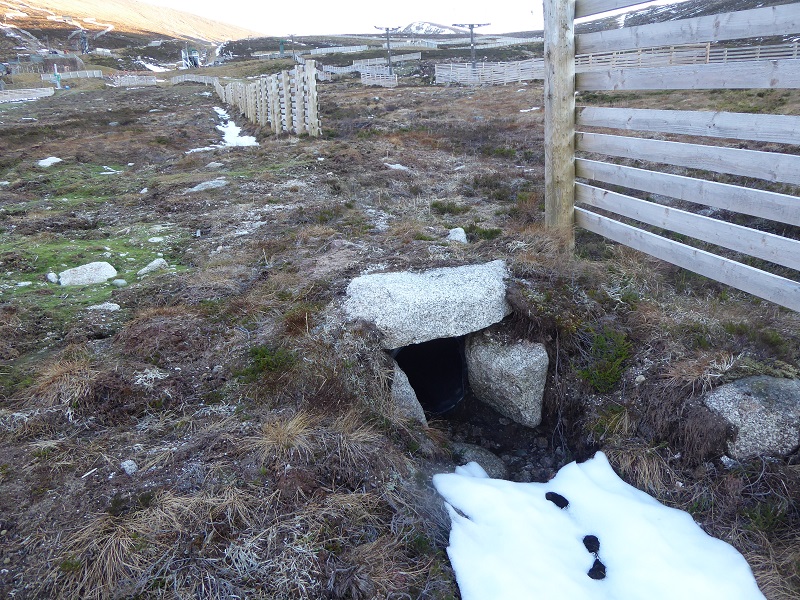
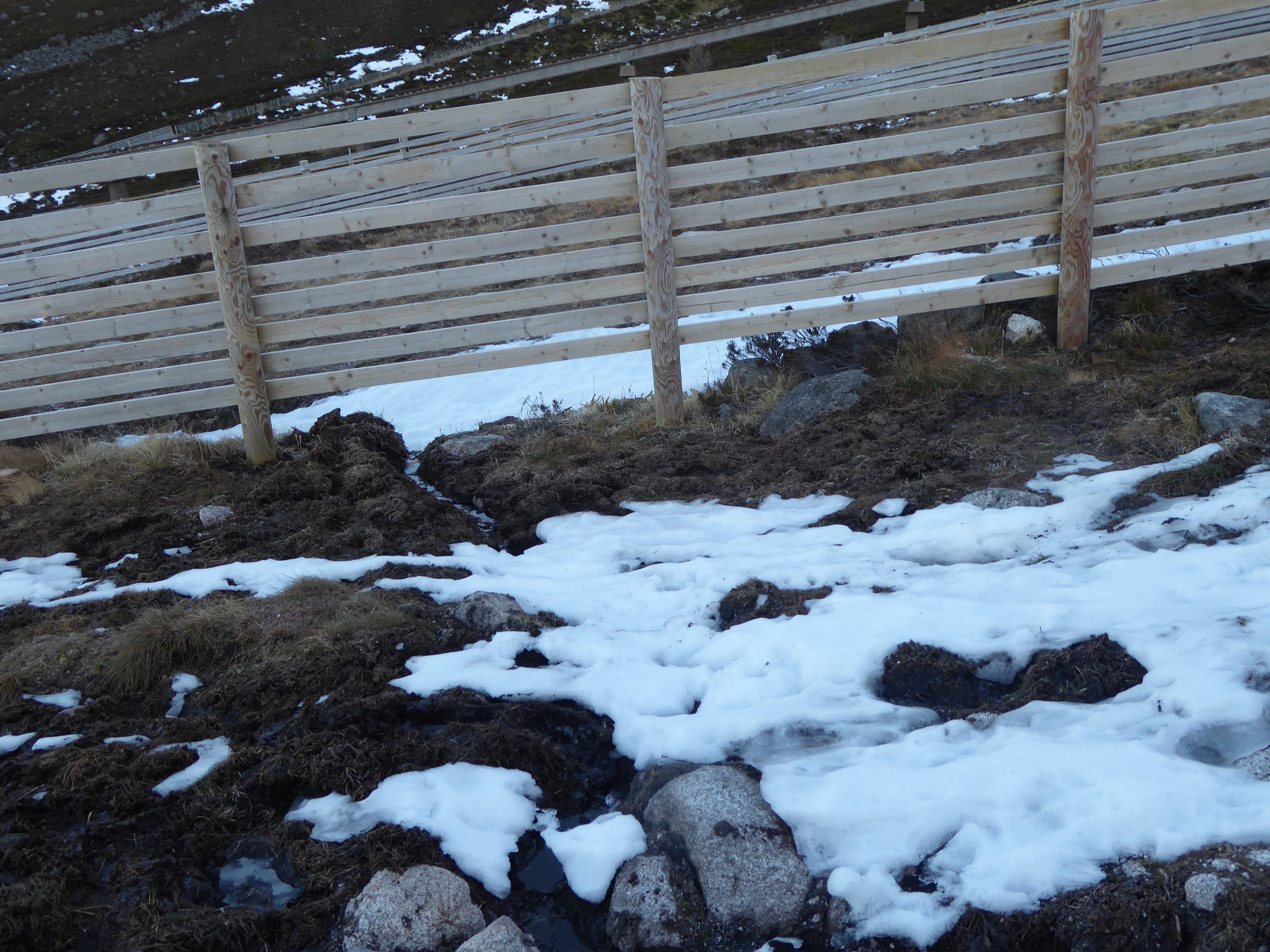
So where is the environmental impact assessment of all this drainage work? What are the implications? We simply don’t know. I don’t think that is good enough.
The way forward
The CNPA needs to work out how access could managed to this site without agreeing to a track which is going to constantly erode, what damage there has been to vegetation outwith the site granted planning permission together with what remedial measures are required and also also ensure there is a proper assessment of the likely impact of the drainage works and how this might be mitigated
I previously called for an independent ecological assessment of the area and options to repair the damage that has been done. In my view this is still needed and the CNPA is not in a position to take a properly informed decision about this planning application. It needs to do so, not just for the landscape and wildlife, but the people who enjoy Cairngorm, not least the people who ski there.